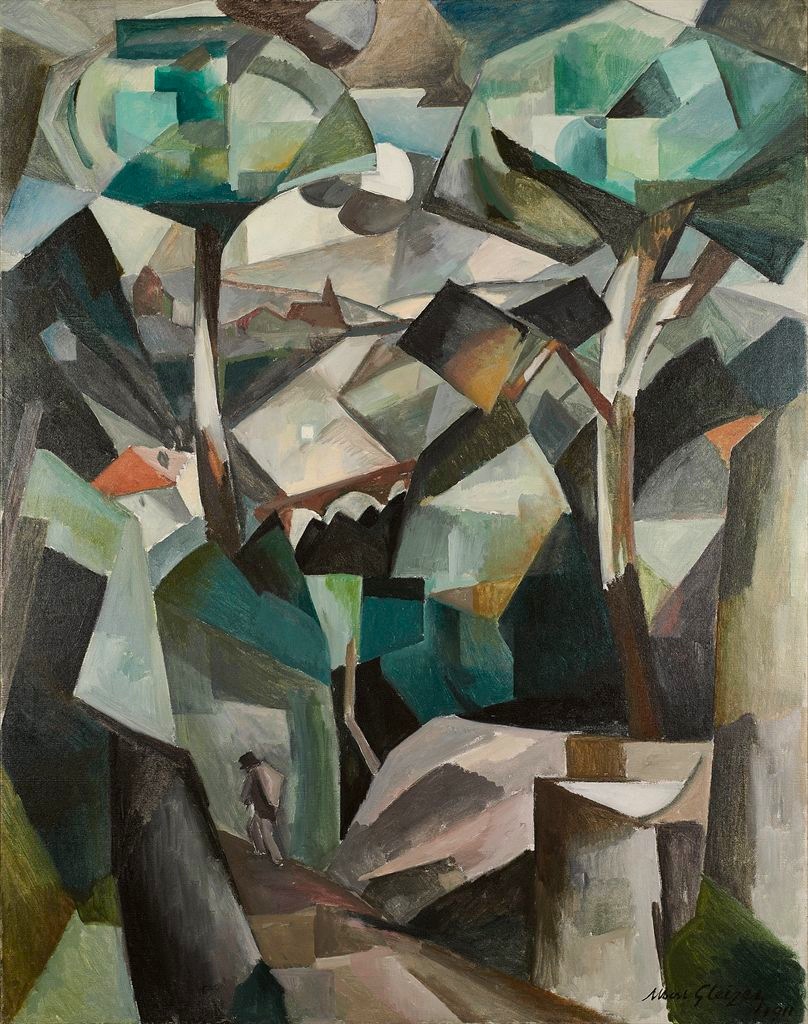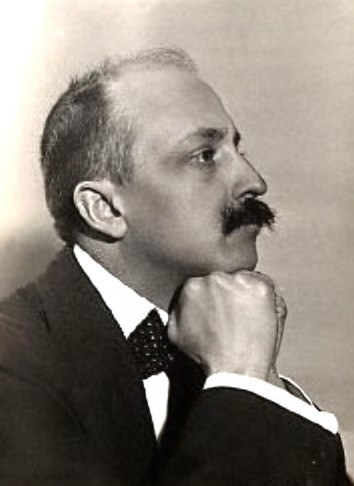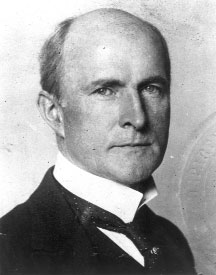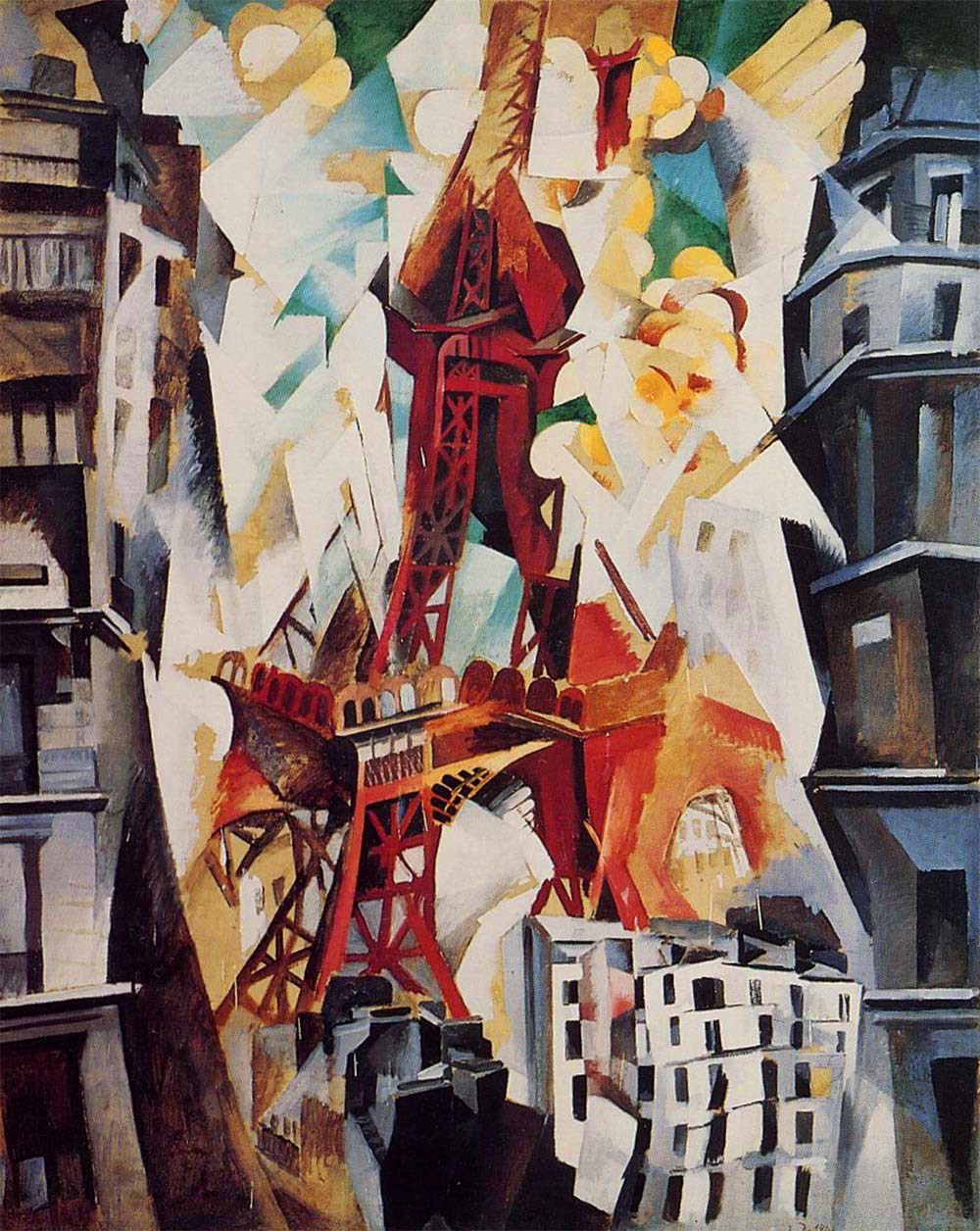|
Man On A Balcony
''Man on a Balcony'' (also known as ''Portrait of Dr. Théo Morinaud'' and L'Homme au balcon''), is a large oil painting created in 1912 by the French artist, theorist and writer Albert Gleizes (1881–1953). The painting was exhibited in Paris at the Salon d'Automne of 1912 (no. 689). The Cubist contribution to the salon created a controversy in the French Parliament about the use of public funds to provide the venue for such 'barbaric art'. Gleizes was a founder of Cubism, and demonstrates the principles of the movement in this monumental painting (over six feet tall) with its projecting planes and fragmented lines. The large size of the painting reflects Gleizes's ambition to show it in the large annual salon exhibitions in Paris, where he was able with others of his entourage to bring Cubism to wider audiences.Michael R. Taylor, from Masterpieces from the Philadelphia Museum of Art: Impressionism and Modern Art (2007) In February 1913, Gleizes and other artists introduced the ... [...More Info...] [...Related Items...] OR: [Wikipedia] [Google] [Baidu] |
Albert Gleizes
Albert Gleizes (; 8 December 1881 – 23 June 1953) was a French artist, theoretician, philosopher, a self-proclaimed founder of Cubism and an influence on the School of Paris. Albert Gleizes and Jean Metzinger wrote the first major treatise on Cubism, ''Du "Cubisme"'', 1912. Gleizes was a founding member of the Section d'Or group of artists. He was also a member of ''Der Sturm'', and his many theoretical writings were originally most appreciated in Germany, where especially at the Bauhaus his ideas were given thoughtful consideration. Gleizes spent four crucial years in New York, and played an important role in making America aware of modern art. He was a member of the Society of Independent Artists, founder of the Ernest-Renan Association, and both a founder and participant in the Abbaye de Créteil. Gleizes exhibited regularly at Léonce Rosenberg's ''Galerie de l’Effort Moderne'' in Paris; he was also a founder, organizer and director of Abstraction-Création. From the mid-1 ... [...More Info...] [...Related Items...] OR: [Wikipedia] [Google] [Baidu] |
Filippo Tommaso Marinetti
Filippo Tommaso Emilio Marinetti (; 22 December 1876 – 2 December 1944) was an Italian poet, editor, art theorist, and founder of the Futurist movement. He was associated with the utopian and Symbolist artistic and literary community Abbaye de Créteil between 1907 and 1908. Marinetti is best known as the author of the first ''Futurist Manifesto'', which was written and published in 1909, and as a co-author of the Fascist Manifesto, in 1919. Childhood and adolescence Emilio Angelo Carlo Marinetti (some documents give his name as "Filippo Achille Emilio Marinetti") spent the first years of his life in Alexandria, Egypt, where his father (Enrico Marinetti) and his mother (Amalia Grolli) lived together ''more uxorio'' (as if married). Enrico was a lawyer from Piedmont, and his mother was the daughter of a literary professor from Milan. They had come to Egypt in 1865, at the invitation of Khedive Isma'il Pasha, to act as legal advisers for foreign companies that were taking part i ... [...More Info...] [...Related Items...] OR: [Wikipedia] [Google] [Baidu] |
Maurice De Vlaminck
Maurice de Vlaminck (4 April 1876 – 11 October 1958) was a French painter. Along with André Derain and Henri Matisse, he is considered one of the principal figures in the Fauve movement, a group of modern artists who from 1904 to 1908 were united in their use of intense colour.Freeman, Judi, et al. ''The Fauve Landscape'', pp.13–14. Abbeville Press, 1990. Vlaminck was one of the Fauves at the controversial Salon d'Automne exhibition of 1905. Life Maurice de Vlaminck was born on Rue Pierre Lescot in Paris. His father Edmond Julien was Flemish and taught violin and his mother Joséphine Caroline Grillet came from Lorraine and taught piano. His father taught him to play the violin.Melikian, Souren"Vlaminck: Expressing mood with color" '' International Herald Tribune'', 11 July 2008. Retrieved 13 July 2008. He began painting in his late teens. In 1893, he studied with a painter named Henri Rigalon on the Île de Chatou. In 1894 he married Suzanne Berly. The turning poi ... [...More Info...] [...Related Items...] OR: [Wikipedia] [Google] [Baidu] |
André Derain
André Derain (, ; 10 June 1880 – 8 September 1954) was a French artist, painter, sculptor and co-founder of Fauvism with Henri Matisse. Biography Early years Derain was born in 1880 in Chatou, Yvelines, Île-de-France, just outside Paris. In 1895 he began to study on his own, contrary to claims that meeting Vlaminck or Matisse began his efforts to paint, and occasionally went to the countryside with an old friend of Cézanne's, Father Jacomin along with his two sons. In 1898, while studying to be an engineer at the Académie Camillo, he attended painting classes under Eugène Carrière, and there met Matisse. In 1900, he met and shared a studio with Maurice de Vlaminck and together they began to paint scenes in the neighbourhood, but this was interrupted by military service at Commercy from September 1901 to 1904. Following his release from service, Matisse persuaded Derain's parents to allow him to abandon his engineering career and devote himself solely to painting; subs ... [...More Info...] [...Related Items...] OR: [Wikipedia] [Google] [Baidu] |
Jacques Villon
Jacques Villon (July 31, 1875 – June 9, 1963), also known as Gaston Duchamp, was a French Cubist and abstract painter and printmaker. Early life Born Émile Méry Frédéric Gaston Duchamp in Damville, Eure, in Normandy, France, he came from a prosperous and artistically inclined family. While he was a young man, his maternal grandfather Émile Frédéric Nicolle, a successful businessman and artist, educated Villon and his siblings. Gaston Duchamp was the elder brother of: *Raymond Duchamp-Villon (1876–1918), sculptor *Marcel Duchamp (1887–1968), painter, sculptor and author * Suzanne Duchamp-Crotti (1889–1963), painter In 1894, he and his brother Raymond moved to Montmartre in Paris. There, he studied law at the University of Paris, but received his father's permission to study art on the condition that he must continue studying law. To distinguish himself from his siblings, Gaston Duchamp adopted the pseudonym of Jacques Villon as a tribute to the French med ... [...More Info...] [...Related Items...] OR: [Wikipedia] [Google] [Baidu] |
John Quinn (collector)
John Quinn (April 14, 1870 in Tiffin, Ohio – July 28, 1924 in Fostoria, Ohio) was an Irish-American cognoscente of the art world and a lawyer in New York City who fought to overturn censorship laws restricting modern literature and art from entering the United States. Quinn was an important patron of chief figures in Post-impressionism and literary Modernism, a major collector of modern art and original manuscripts, and the first to exhibit these works after winning legal battles against censorship and cultural isolation. In the 1920s he owned the largest single collection of modern European paintings in the world. He fought key legal battles that opened American culture to 20th century art movements, including his Congressional appeals to overturn the Payne–Aldrich Tariff Act. He was part of the group who staged the Armory Show in 1913, the first great exhibition of European and American modern art in the United States, at the 69th Regiment Armory in New York. Quinn gave p ... [...More Info...] [...Related Items...] OR: [Wikipedia] [Google] [Baidu] |
Section D'Or
The Section d'Or ("Golden Section"), also known as Groupe de Puteaux or Puteaux Group, was a collective of Painting, painters, sculptors, poets and critics associated with Cubism and Orphism (art), Orphism. Based in the Parisian suburbs, the group held regular meetings at the home of the Duchamp brothers in Puteaux and at the studio of Albert Gleizes in Courbevoie. Active from 1911 to around 1914, members of the collective came to prominence in the wake of their controversial showing at the Salon des Indépendants in the spring of 1911. This showing by Albert Gleizes, Jean Metzinger, Robert Delaunay, Henri le Fauconnier, Fernand Léger and Marie Laurencin (at the request of Guillaume Apollinaire, Apollinaire), created a scandal that brought Cubism to the attention of the general public for the first time. The Salon de la Section d'Or, held October 1912—the largest and most important public showing of Cubist works prior to World War I—exposed Cubism to a wider audience still. A ... [...More Info...] [...Related Items...] OR: [Wikipedia] [Google] [Baidu] |
Portrait Of Jacques Nayral (Gleizes)
''Portrait of Jacques Nayral'' (also known as ''Portrait de Jacques Nayral'') is a large oil painting created in 1911 by the French artist, theorist and writer Albert Gleizes (1881–1953). It was exhibited in Paris at the Salon d'Automne of 1911 (no. 609), the Salon de la Section d'Or, 1912 (no. 38), and reproduced in ''Du "Cubisme"'' written by Jean Metzinger and Albert Gleizes in 1912, the first and only manifesto on Cubism. Metzinger in 1911 described Gleizes' painting as 'a great portrait'. ''Portrait of Jacques Nayral'', one of Gleizes' first major Cubist works, while still 'readable' in the Figurative art, figurative or Representation (arts), representational sense, exemplifies the mobile, dynamic fragmentation of form characteristic of Cubism at the outset of 1911. Highly sophisticated in theory and in practice, this aspect of simultaneity would soon become identified with the practices of the Section d'Or. Here, Gleizes deploys these techniques in a radical, personal and ... [...More Info...] [...Related Items...] OR: [Wikipedia] [Google] [Baidu] |
Robert Delaunay
Robert Delaunay (12 April 1885 – 25 October 1941) was a French artist who, with his wife Sonia Delaunay and others, co-founded the Orphism art movement, noted for its use of strong colours and geometric shapes. His later works were more abstract. His key influence related to bold use of colour and a clear love of experimentation with both depth and tone. Overview Delaunay is most closely identified with Orphism. From 1912 to 1914, he painted nonfigurative paintings based on the optical characteristics of brilliant colors that were so dynamic they would function as the form. His theories are mostly concerned with color and light and influenced many, including Stanton Macdonald-Wright, Morgan Russell, Patrick Henry Bruce, Der Blaue Reiter, August Macke, Franz Marc, Paul Klee, and Lyonel Feininger. Art Critic Guillaume Apollinaire was strongly influenced by Delaunay's theories of color and often quoted from them to explain Orphism, which he had named. Delaunay's fixations w ... [...More Info...] [...Related Items...] OR: [Wikipedia] [Google] [Baidu] |
Francis Picabia
Francis Picabia (: born Francis-Marie Martinez de Picabia; 22January 1879 – 30November 1953) was a French avant-garde painter, poet and typographist. After experimenting with Impressionism and Pointillism, Picabia became associated with Cubism. His highly Abstract art, abstract planar compositions were colourful and rich in contrasts. He was one of the early major figures of the Dada movement in the United States and in France. He was later briefly associated with Surrealism, but would soon turn his back on the art establishment. Biography Early life Francis Picabia was born in Paris of a French mother and a Cuban father of Spanish descent. Some sources would have his father as of aristocratic Spanish descent, whereas others consider him of non-aristocratic Spanish descent, from the region of Galicia (Spain), Galicia. His birth year of 1879 coincided with the Spanish-Cuban Little War (Cuba), Little War; and though Picabia was born in Paris, his father was involved in Cuba ... [...More Info...] [...Related Items...] OR: [Wikipedia] [Google] [Baidu] |
Nude Descending A Staircase No
Nudity is the state of being in which a human is without clothing. The loss of body hair was one of the physical characteristics that marked the biological evolution of modern humans from their hominin ancestors. Adaptations related to hairlessness contributed to the increase in brain size, bipedalism, and the variation in human skin color. While estimates vary, for at least 90,000 years anatomically modern humans were naked. The invention of clothing was part of the transition from being not only anatomically but behaviorally modern. Clothing and body adornments were elements in non-verbal communication reflecting social status and individuality. Through much of history until the late modern period, people might be unclothed in public by necessity or convenience either when engaged in effortful activity, including labor and athletics; or when bathing or swimming. Such functional nudity occurred in groups that were usually but not always segregated by sex. Among ancient ... [...More Info...] [...Related Items...] OR: [Wikipedia] [Google] [Baidu] |
Marcel Duchamp
Henri-Robert-Marcel Duchamp (, , ; 28 July 1887 – 2 October 1968) was a French painter, sculptor, chess player, and writer whose work is associated with Cubism, Dada, and conceptual art. Duchamp is commonly regarded, along with Pablo Picasso and Henri Matisse, as one of the three artists who helped to define the revolutionary developments in the plastic arts in the opening decades of the 20th century, responsible for significant developments in painting and sculpture. Duchamp has had an immense impact on twentieth-century and twenty first-century art, and he had a seminal influence on the development of conceptual art. By the time of World War I he had rejected the work of many of his fellow artists (such as Henri Matisse) as "retinal" art, intended only to please the eye. Instead, Duchamp wanted to use art to serve the mind. Early life and education Marcel Duchamp was born at Blainville-Crevon in Normandy, France, to Eugène Duchamp and Lucie Duchamp (formerly Lucie Nicolle) ... [...More Info...] [...Related Items...] OR: [Wikipedia] [Google] [Baidu] |










